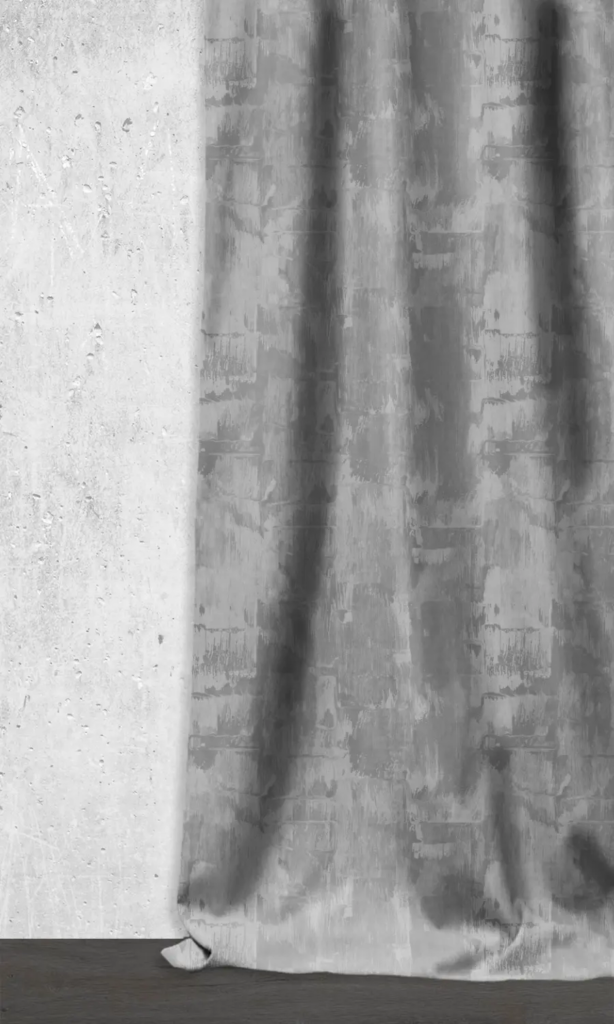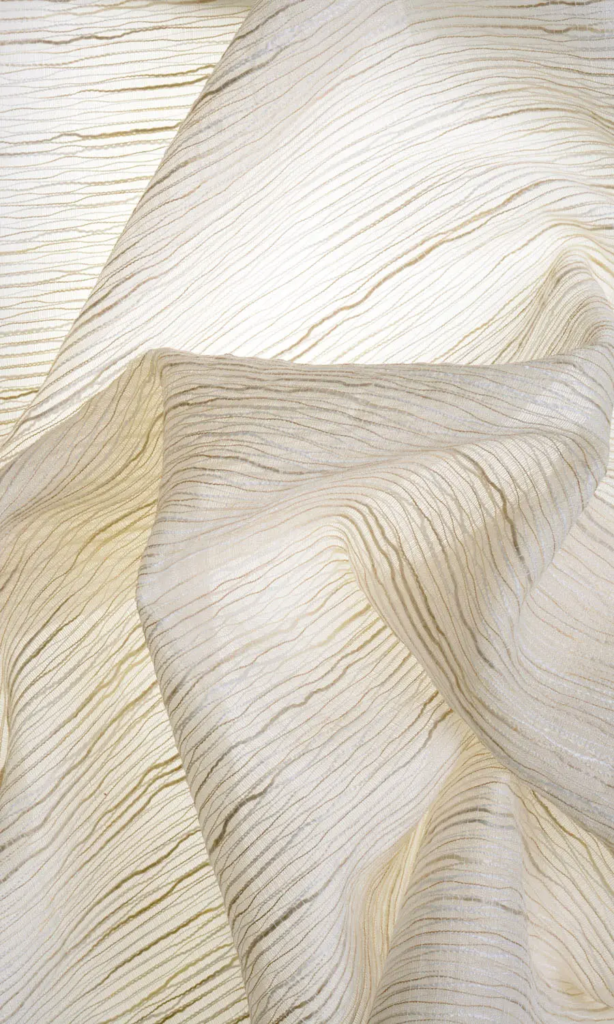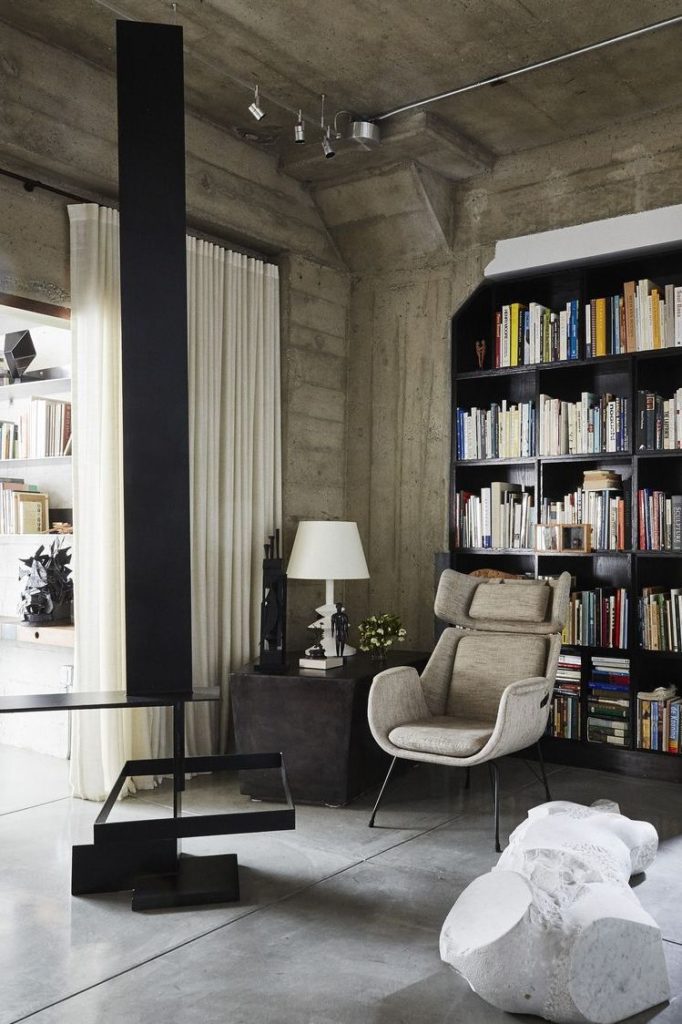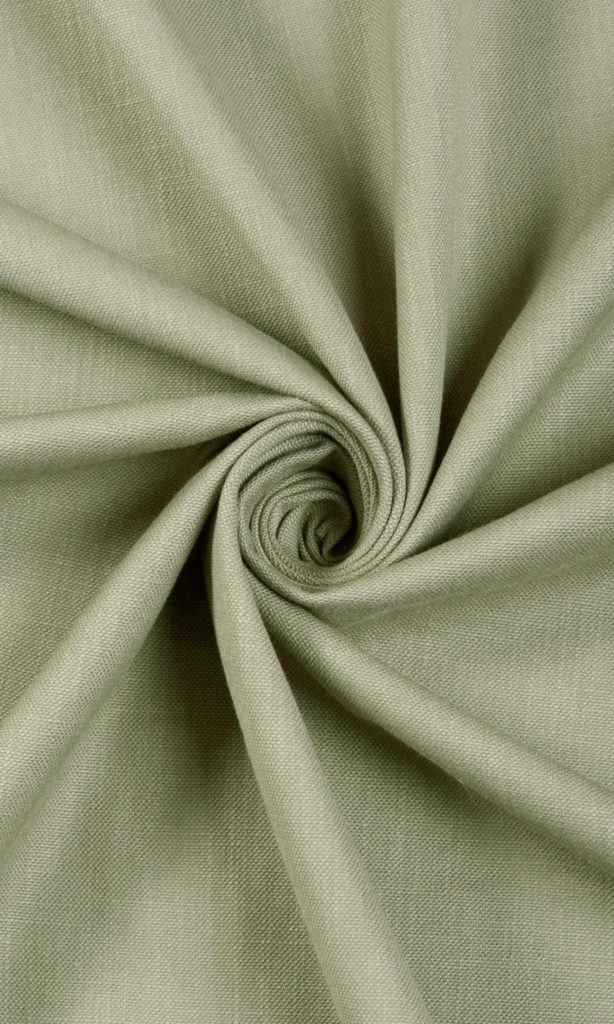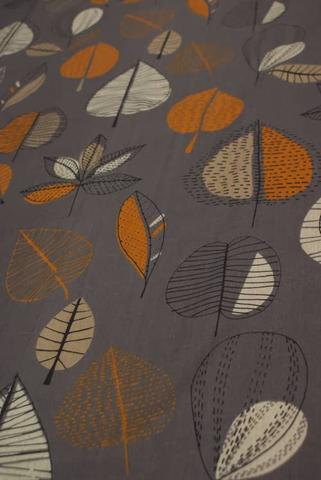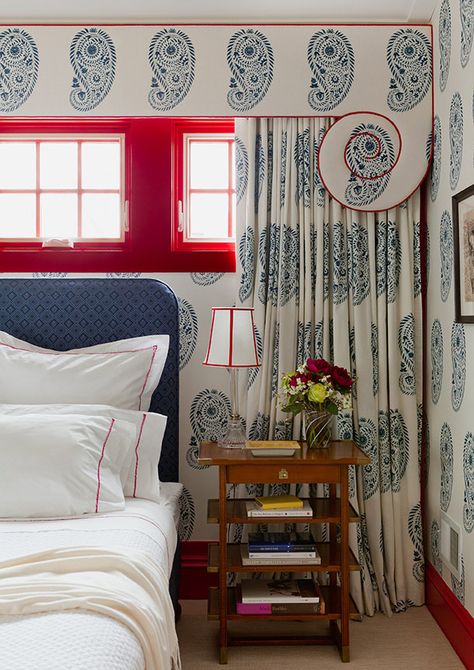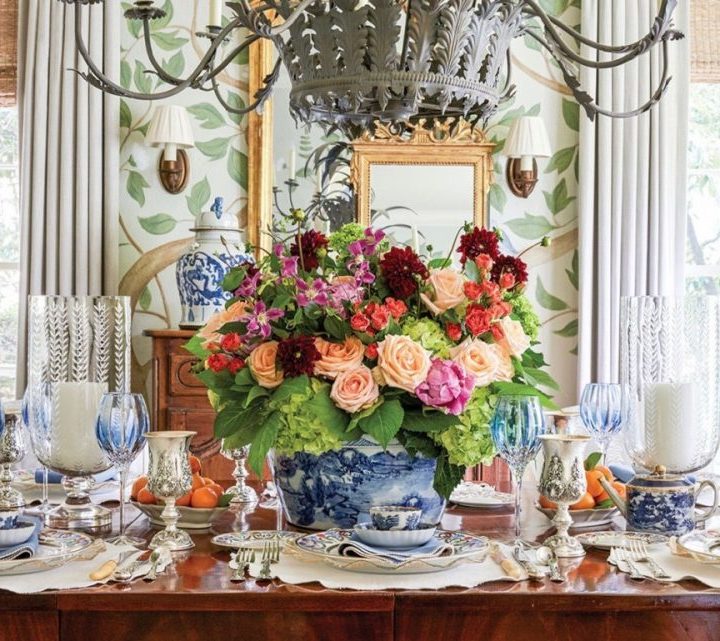Spiffy Speak
Divide a Room with Room Divider Curtains: Ideas & Tips
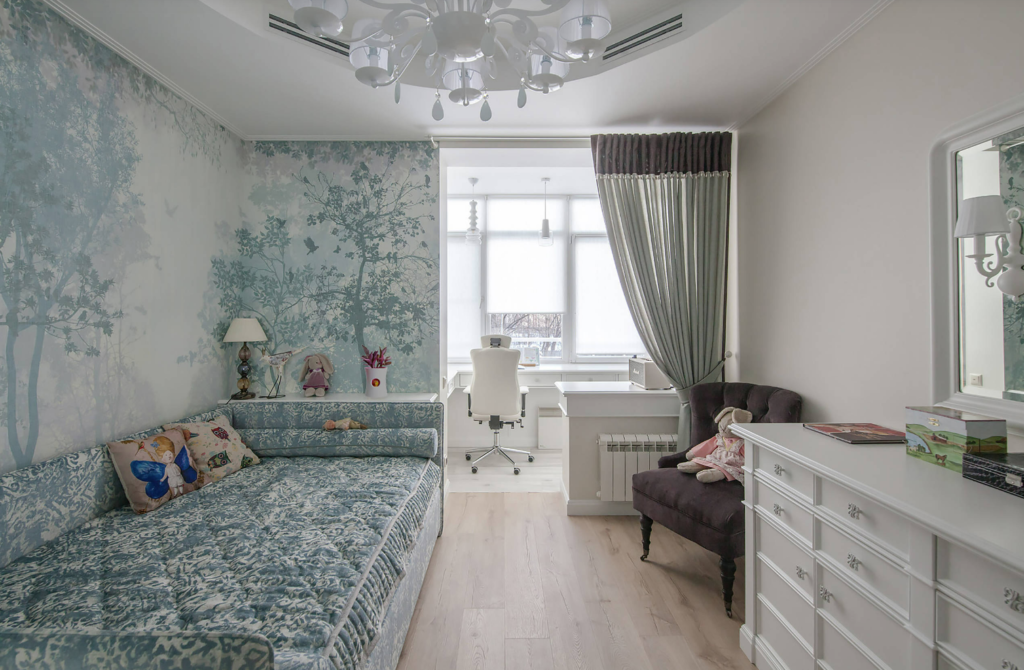
While open plans have their own fanbase, sometimes, it becomes essential to section out spaces within a room with visible distinction. Whether you want to divvy up a spacious master bedroom, dorm room, attic, or basement, curtains are a great way to do so.
Rather than feeling like an intrusive wall, curtains can actually appear to be part of the décor. They are easy to purchase, install and maintain, make no demands on the architecture, and can be easily fit into your next home in case you move out. So, if you’re thinking on this line, view this guide on how to divide a room with curtains to get started.
Order custom curtains and drapes from Spiffy Spools online in any size. Pick from over 3,000 fabrics and patterns!
Simple, Elegant & Cost-Effective: Room Divider Curtains
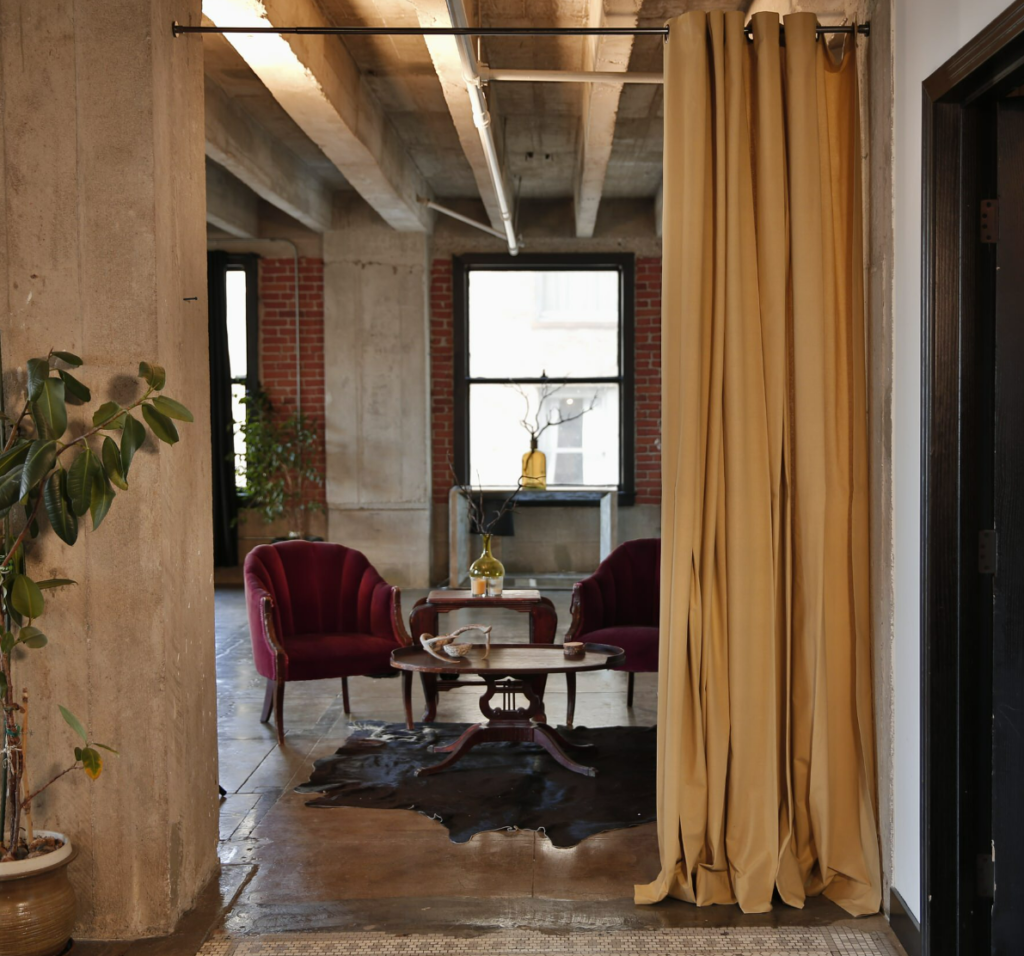
If you cannot make structural changes to your home, or if your stay is temporary, or if you’re decorating a studio apartment or an open plan room, and looking for a way to zone spaces, curtains are practically the easiest way of dividing a room. The advantage of this method of room division is that you can easily slide them open and enjoy the space as one whole, which comes in handy especially if you’re living in a small apartment. It neither needs professional help nor a ton of money, plus you get a decorative accessory to adorn the space.
There are a few factors to take into consideration when you purchase curtains to be used as room dividers. Let us take you through them one by one.
Consider the View on Both Sides of Room Divider Curtains
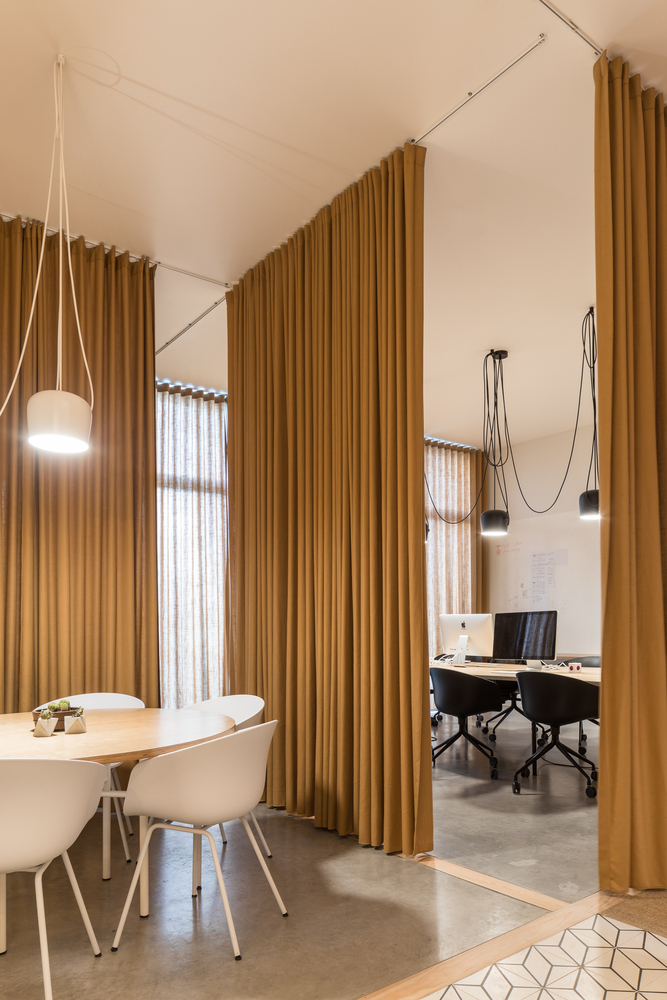
When planning for room divider curtains, the first and most important consideration to be made is regarding the aesthetic appeal of the rear side of the curtains. Well, curtains being curtains, hems on the backside are an unavoidable sight. But most other factors can be altered to suit the purpose.
If you choose curtain styles that use header tapes on the back, the tape and the rings or clips will be visible too. Hence, if both sides of the curtains are to be visually appealing, we recommend curtain styles like rod pockets, tab tops or tie tops that look just the same from both sides. Whereas, for example, pinch pleat drapes will have all the pleats on the front and only the header tape and rings on the back.
Another aspect that needs consideration is lining. While we recommend window drapes to be lined for better fall and protection from sun damage, room divider curtains might profit from the lack of it. Lined curtains can only show the lining on the back, not the face fabric and that may not be a desirable look.
The next consideration to be made is regarding the drapery fabric itself. We recommend picking a drapery fabric that has the same finish on both sides. Or, at the least, the rear side should be a presentable color or print. Therefore, you may do better by avoiding embroidered fabrics or one-side print fabrics among others.
Plan Hardware for Room Divider Curtains
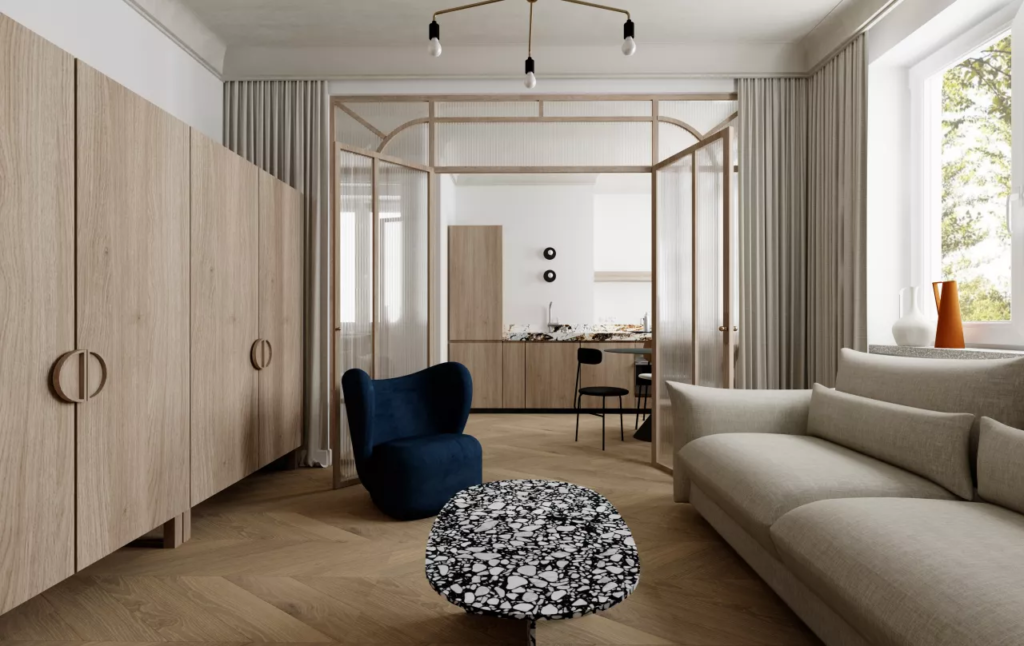
One of the challenges when it comes to using curtains as a room divider is figuring out how to hang them. The method you should choose depends on where you need them to be placed:
- If you’re hanging curtains across a cased opening, install the hardware over the frame. This method will allow your curtains to beautifully cascade over the frame and easily open and close.
- If there is no wall space to hang the curtains, mount the hardware onto the ceiling.
The second decision to make is regarding the hardware itself. You can install drapery poles, the most commonly found method. Or, you can go for the modern curtain track system. Both have their own unique traits.
- Curtain rods are hung on brackets and closed with finials on both ends. They can be mounted on both walls as well as ceilings, although the latter is uncommon. In this method, some gap will be visible between the ceiling and the curtain.
- Curtain tracks are generally mounted to the ceiling. This method keeps the curtains as close to the ceiling as possible for an uncluttered, integrated look with its sleek, minimalistic lines.
Choose Material in Relation to the Purpose
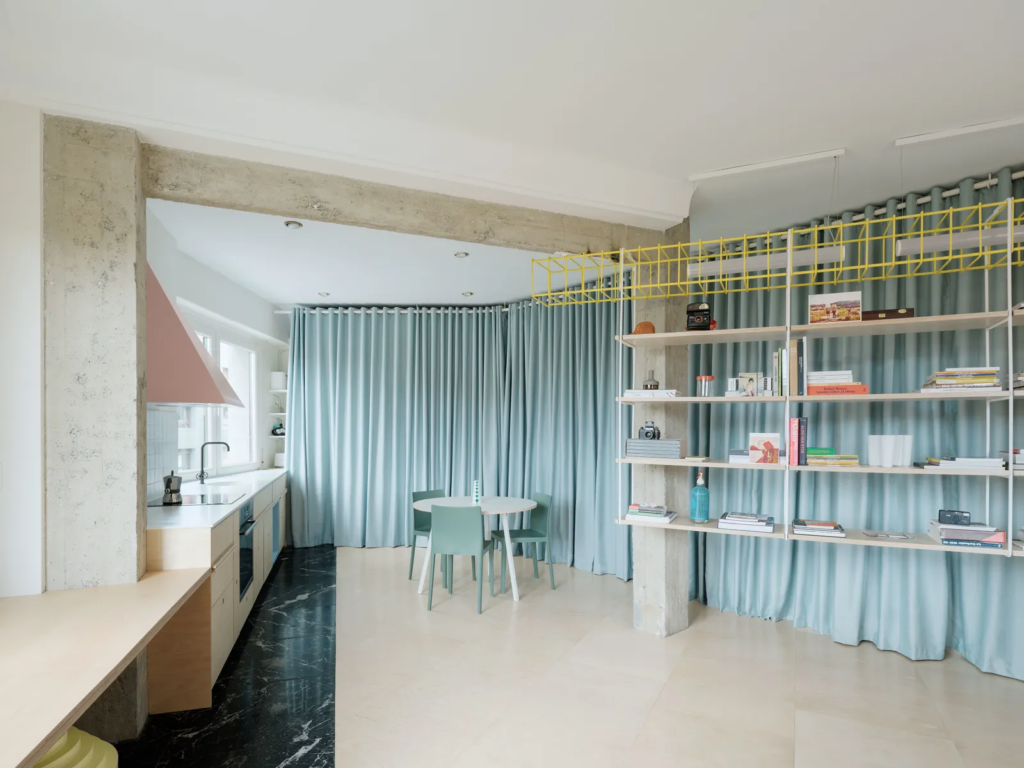
The purpose in general is clear – that you want to divide the room into two sections. But, make the definition more clear and precise because that can help you pick out the best fabric to design them in.
For example, if it is only to specify the zones without strict visual segregation, then semi-transparent curtains will do. On the contrary, if you’re looking for clear-cut separation, then tight-knit heavier curtains are required.
Here’s a quick guide to picking the right fabric:
- If you’re hanging curtains for privacy, be sure to pick curtains with opaque fabric materials, such as blackout or thick velvet curtains. These will ensure that not even your shadow will be visible through the curtains.
- If you’re hanging curtains to create a boundary, sheer and linen fabric are wonderful selections. They create an apparent separation between spaces, but their light and airy appearance make the distinction more relaxed.
- If you’re hanging curtains to define an entryway/foyer, any fabric will work nicely! This selection will ultimately come down to a matter of preference and what best matches the rest of your décor.
SHOP NOW: CUSTOM BLACKOUT CURTAINS & WINDOW DRAPES FROM SPIFFY SPOOLS
Spotlight On: Berrisford
Our Berrisford is a dimout fabric featuring a color palette of greys and a chic, abstract pattern. The shades blend together for a contemporary-elegant effect, making Berrisford perfect for curtains in spaces where you need to block outside light. If you are aiming for privacy, this fabric is the one for you, blocking out the entire view, and becoming a fabric wall separating two spaces.
Spotlight On: Sade
A textured sheer fabric in an ivory on ivory, warm monochrome palette. The backdrop is sheer to let in light. It is woven through with randomly wavy horizontal lines in opaque thread. The overall effect is quite charmingly bohemian. If the goal is to simply delineate two spaces without the concern of creating two rigidly private zones, Sade is the perfect fabric. It will become the screen while also adding an element of visual aesthetic to the room.
Select Suitable Curtain Style
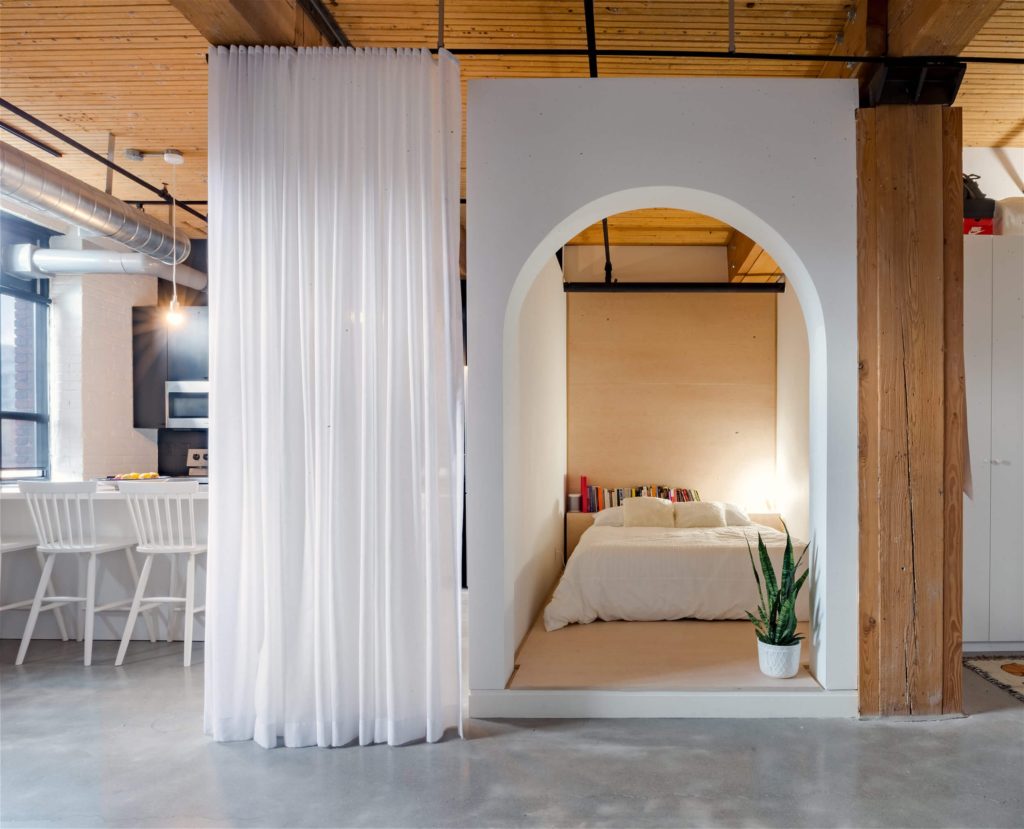
All curtains might look just the same to the untrained eye, but observe the top portion and you’ll know that curtains have more varieties than you ever imagined. The header of the curtain has the tape behind it onto which the rings or pins are hooked. Or, it may have fabric loops or grommets through which the drapery pole can pass. The front portion of the header holds the pinched pleats, if any.
The heading style of the curtains are to be selected with care because that will determine how they hang, gather in folds and move on the pole. It will also impact the overall appeal of the space. Again, it’s the purpose of the division that will inform the choice of the curtain style.
In many cases, when curtains are used as room dividers, they are not operated often. Curtains that don’t ply on the pole too easily such as rod pockets or back tab tops will do well in these scenarios.
But, say, you divide the office area from your bedroom with the curtains and draw them only when on a video conference. You may want to open and close the curtains very often, so you certainly need curtains that function smoothly. This calls for heading styles that employ rings or grommets such as pinch pleats, grommet tops, flat panel tops, or the like.
Similarly, if it is a sleeping area that you have set apart with your curtains, you might wish curtains that provide better light control. Even if you choose blackout curtains for this purpose, if the heading style does not support the cause, the plan will fail. You need curtains with headers such as pinch pleats, rod pockets, or back tab tops. And avoid styles that have gaps for light to pass such as grommet tops, tab tops, and tie top curtains. Read our blog post here for further tips on how to avoid light leaks from your curtains’ edges.
So, choose the curtain style depending on the area that you’re enclosing and the predictable frequency of operation. Also bear in mind the guidance shared above on picking styles that minimise visibility of hardware and header tapes.
For more information on curtains styles, check out our drapery heading style guide.
Have a Well-Considered Plan for Lighting
When separating a room into sections, it is important to consider the window position, especially, if there is only one. If the curtain covers up the only source of light, will it be difficult to work on the other side of the curtain? Or, will it be much better when shut off that way because it’s a sleeping area or a walk-in closet?
If shutting off the light passage from the window can be troublesome and the curtains don’t need to provide privacy, consider hanging sheer curtains. These will provide segregation while still filtering in light.
Or, if you cannot compromise with privacy, hang regular curtains and make another arrangement for lighting. You can provide additional light sources in the zoned off section with a well-considered mix of ambiance lighting and task lighting.
Another option is to rearrange the layout of the room and then divide the zones. This way, you can section off the area that needs least daylight and make full use of the window as a light source. The curtains will portion off the room as it should and will cut off light only to areas that profit from the same.
Decide on the Decor Value
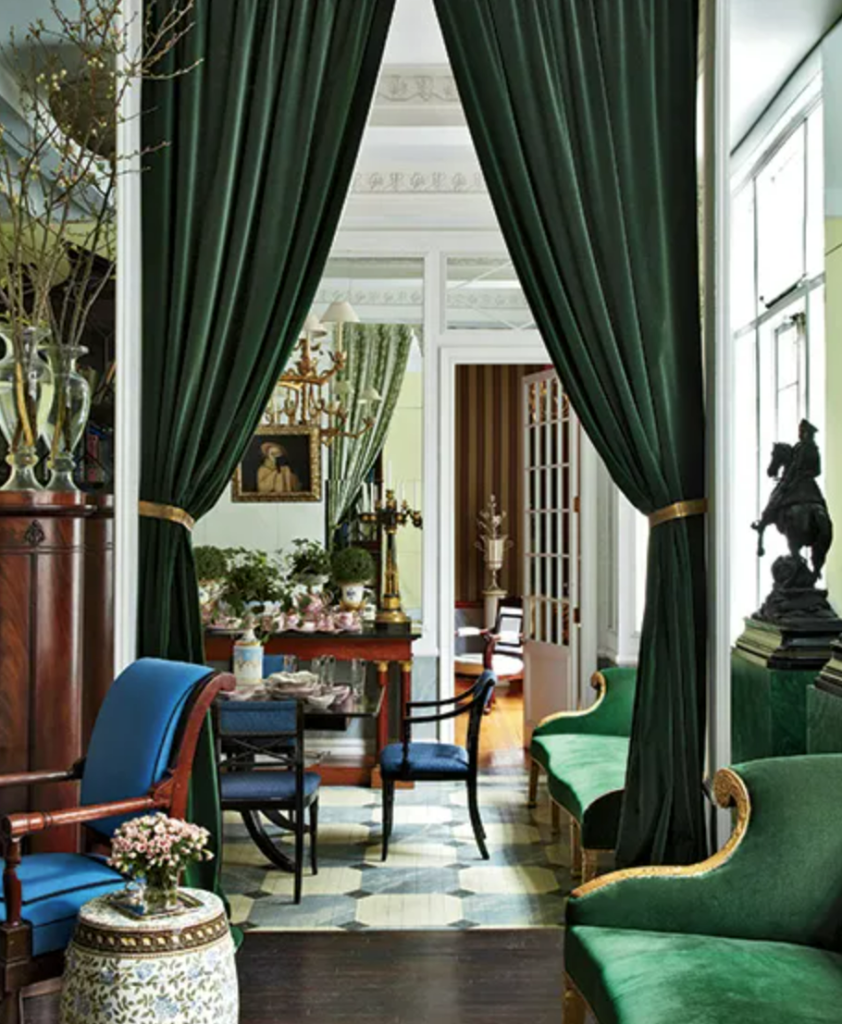
Do you want your curtains to divide the room and do no more? Or, do you want them to act as a feature piece? The answer to this question will help you decide on the palette and the design.
If your room has no focal point, and you would love your curtains to be that, go for a bold patterned drapery. Patterns draw attention, especially if they employ attractive colors, large or medium scaled motifs, intricate shapes, and striking contrasts. They can also overpower the room if overdone. So, always mind the scale and the level of detail. Going for medium or tiny scaled motifs or less saturated palettes are a safe take on patterned room divider curtains.
The other possibility is that you want them to blend in with the space rather than stand out as a striking statement. They’re meant to simply draw a boundary rather than act as the centerpiece of the room. In such a case, it is better to stick with a solid color that matches your current color scheme. Or choose curtains that match the walls perfectly, and they’ll seamlessly blend into the architecture.
Spotlight On: Gristage
One of our finest linen-cotton blends. Part of our Somera collection, this pale green linen has all the cool of a fine linen with the easy wearability of cotton. Mix and match it with one of the other tone linens in a color block style. Or use it as is. This classic medium-weight fabric has a beautiful hang and drape which is sure to fit in any room as a functional decor element.
Be Wise with the Length
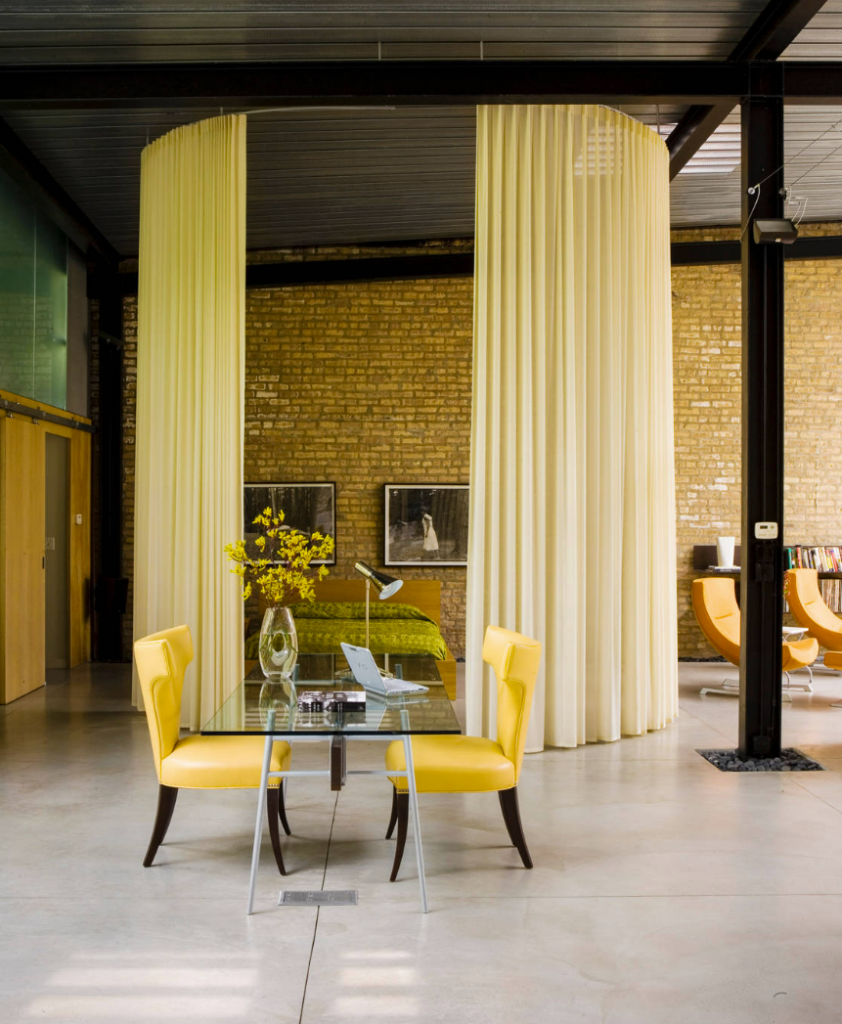
We suggest designing your curtains so that they hang either slightly above the floor or barely graze the floor. This is because if your curtains are too short, they’ll lose their appearance as a decorative wall or door. Plus, if you’re hanging them for privacy, short curtains will reveal what’s on either side of the divided space.
If you hang long curtains that spill onto the floor, such as puddled curtains, they’ll drag across the ground as you open and close them. Not only will this make them more difficult to maneuver, but they’ll likely become dirty and damaged quickly.
READ MORE: HOW LONG SHOULD MY CURTAINS BE?
Decide on the Number of Panels
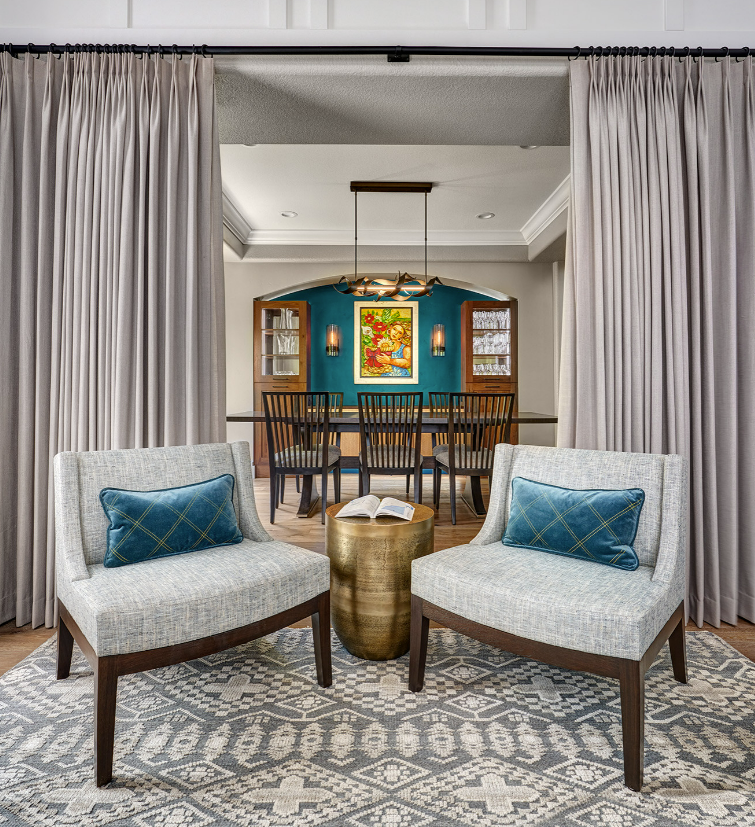
Another consideration to be made is regarding the number of panels to order.
- Double panel curtains can work like an entryway when drawn open from both sides. If you plan to keep the curtains half open in this manner and close them fully only on occasions, this option is great. If the area to be covered is wide, it is always better to go for a minimum of two panels so they are easy to operate.
- Multiple panel curtains is an option to be considered where the area to be covered is extremely wide. Too wide curtains can be overweight. So, going for multiple panels facilitates easier maintenance.
- Single panel curtains are best for defining areas that are not meant to be passed through often and/or where the opening may be too narrow to need a pair.
Order Custom Curtains from Spiffy Spools
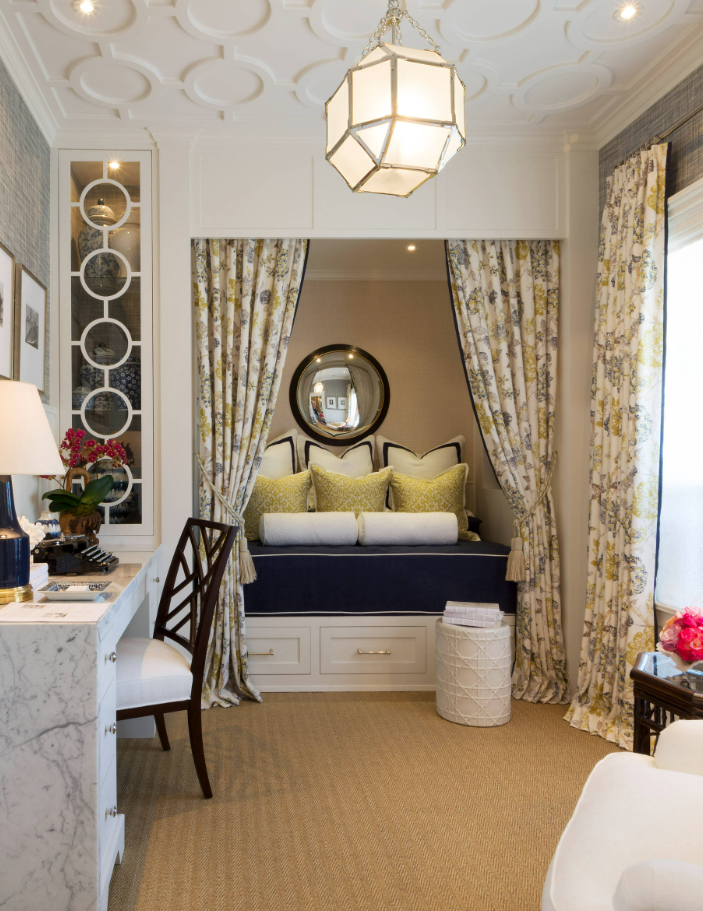
Now that you know how to divide a room with curtains, if you’re ready to start shopping, order your custom curtains from Spiffy Spools today. With over 3,000 fabrics, we make it easy to design drapery that fits your exact specifications and style. Explore our site to find the perfect options for your space, and don’t hesitate to contact us with any questions.

